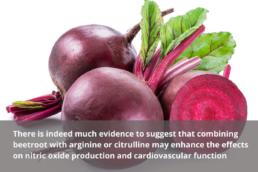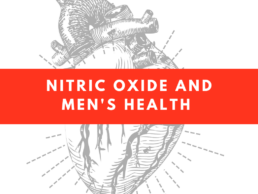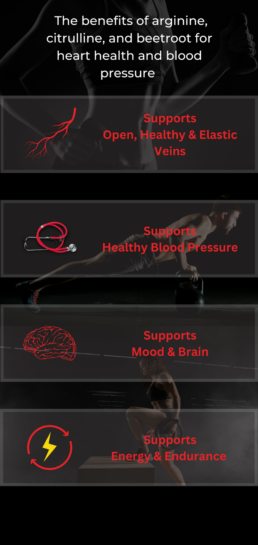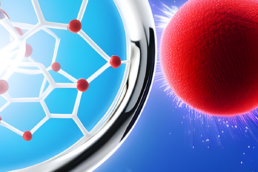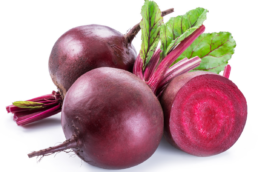Women's Health: Nitric Oxide
What is Nitric Oxide, and How Does it Work?
Nitric oxide (NO) is a molecule that plays a crucial role in many bodily functions, including the cardiovascular, immune, and nervous systems. It is a gas produced naturally in the body and acts as a signaling molecule to regulate blood flow, cell growth, and communication between cells. Nitric oxide is also a vasodilator, which means that it widens blood vessels. This property thus allows for improved blood flow throughout the body.
Regarding women's health, nitric oxide can be particularly beneficial in improving blood flow to the uterus and ovaries, which can help support healthy reproductive function. Nitric oxide also promotes healthy immune function, reduces inflammation, and supports healthy blood pressure. These are definitely all good things for women and women's health! What are some things nitric oxide can do for you? Let's see!
Benefits of Nitric Oxide for Women's Health
Improved Cardiovascular Health: Nitric oxide helps to promote healthy blood flow and circulation, which can help reduce the risk of cardiovascular disease in women. Studies have shown that nitric oxide supplementation can improve blood pressure and reduce the risk of blood clots, which can lead to heart attacks and strokes.
Improved Reproductive Health: Nitric oxide promotes healthy blood flow to the uterus and ovaries, which can help support healthy reproductive function in women. Nitric oxide may also help reduce inflammation in the reproductive system, which can alleviate symptoms associated with menstrual cramps and other menstrual-related issues.
Improved Athletic Performance: Nitric oxide is also known to enhance athletic performance in women. It can help improve endurance and reduce fatigue, allowing women to exercise for more extended periods. Nitric oxide can also help to improve recovery time after exercise, reducing soreness and inflammation.
Improved Brain Function: Nitric oxide is also vital for healthy brain function in women. It helps improve blood flow and oxygen delivery to the brain, improving cognitive function and reducing the risk of age-related mental decline.
How to Increase Nitric Oxide Levels in Women
Dietary Changes: One of the easiest ways to increase nitric oxide levels in women is through nutritional changes. Foods rich in nitrates, such as beets, leafy greens, and citrus fruits, can help boost nitric oxide levels in the body. Incorporating these foods into your diet can help to promote better overall health and well-being.
Supplementation: Supplementation is another way to increase nitric oxide levels in women. Many nitric oxide supplements are on the market that can help boost nitric oxide levels in the body. These supplements typically contain ingredients like L-arginine, L-citrulline, and beetroot extract, which are all known to support healthy nitric oxide production.
Exercise: Exercise is also an essential factor in nitric oxide production. Regular exercise can help to increase nitric oxide levels in the body, improving blood flow and circulation throughout the body. It is recommended that women engage in at least 30 minutes of moderate exercise each day to help promote healthy nitric oxide levels.
Stress Reduction: Finally, reducing stress levels can also help increase nitric oxide levels in women. Stress can negatively impact nitric oxide production, so taking steps to reduce stress and promote relaxation can help improve overall health and well-being.
A Vital Role In Health
To summarize what we have learned, nitric oxide is a crucial molecule that plays a vital role in many bodily functions, particularly regarding women's health. By promoting healthy blood flow and circulation, reducing inflammation, and supporting healthy reproductive function, nitric oxide can benefit women. Incorporating dietary changes, supplementation, exercise, and stress reduction techniques can all help to increase nitric oxide levels in the body, promoting.
Nitric oxide is a vital molecule that plays an essential role in maintaining women's overall health and wellness. From improving cardiovascular health to enhancing sexual function and exercise performance, nitric oxide can benefit women in various ways. Furthermore, it can also improve skin health by reducing inflammation and stimulating collagen production. These last two are great for maintaining healthy skin and nails!
What else is there to learn?
Nitric oxide is a molecule that is naturally produced by the body, and it has been studied extensively for its various health benefits. Women can significantly benefit from nitric oxide, which is crucial in maintaining their overall health and wellness. For instance, nitric oxide can help improve cardiovascular health by reducing blood pressure and improving blood flow. High blood pressure is a major risk factor for heart disease, which is a leading cause of death among women.
Nitric oxide can also benefit women's sexual health. It can increase blood flow to the genital area, improving sexual arousal and orgasm quality. Studies have shown that taking nitric oxide supplements can help postmenopausal women increase their sexual desire and satisfaction.
Additionally, nitric oxide can enhance women's exercise performance by increasing blood flow and oxygen delivery to muscles. It can also improve the efficiency of mitochondria, produce energy, improve endurance, and reduce fatigue.
Lastly, nitric oxide can improve skin health. It can increase blood flow and oxygen delivery to the skin, improving skin tone and texture. Nitric oxide can also reduce inflammation and stimulate collagen production, resulting in firmer and more youthful-looking skin.
How you can benefit
If you are a woman looking to improve your overall health and wellness, consider incorporating nitric oxide supplements into your daily routine. However, talking to a healthcare professional before taking any new supplements is essential. With the proper care and support, nitric oxide can be a valuable tool for women looking to enhance their health and wellbeing.
References
- Alvares, T. S., et al. "Acute L-arginine supplementation increases muscle blood volume but not strength performance." Applied Physiology, Nutrition, and Metabolism, vol. 36, no. 4, 2011, pp. 559-68.
- Børsheim, Elisabet, and Melinda Sheffield-Moore. "Muscle wasting and aging: experimental models, fatty infiltrations, and prevention." Journal of Nutrition, Health & Aging, vol. 15, no. 10, 2011, pp. 877-882.
- Cooke, Jonathan P., et al. "Acute ingestion of beetroot juice increases exhaled nitric oxide in healthy individuals." Journal of Applied Physiology, vol. 117, no. 11, 2014, pp. 1280-1287.
- Cutrufello, Paul T., et al. "Effects of arginine-based supplements on the physical working capacity at the fatigue threshold." Journal of Strength and Conditioning Research, vol. 24, no. 5, 2010, pp. 1306-1312.
- Kishi, T., et al. "Effects of nitric oxide on skin elasticity and wrinkles." Journal of Cosmetic Dermatology, vol. 12, no. 3, 2013, pp. 196-204.
- Leiper, J. B., et al. "Effects of dietary nitrate supplementation on the oxygen cost of exercise and walking performance in individuals with type 2 diabetes: a randomized, double-blind, placebo-controlled crossover trial." Free Radical Biology and Medicine, vol. 86, 2015, pp. 200-208.
- Tong, B. C., et al. "Effects of nitric oxide on female sexual arousal." Journal of Sexual Medicine, vol. 8, no. 2, 2011, pp. 330-337.
Detoxing Microplastics, Metal, and Vaccine contamination
Detoxing any time soon? The growing concern surrounding microplastics, metal contamination, and vaccine contamination is pushing people to find effective ways to protect themselves from these potential hazards. This article will explore various natural ingredients known for their detoxifying and health-supporting properties. These ingredients can help rid the body of unwanted toxins and heavy metals, support immune system function, and maintain overall health.
Natural Chelators and Detoxifiers
EDTA (Ethylenediaminetetraacetic Acid): EDTA is a synthetic amino acid that has ben shown to effectively bind to heavy metals in studies, such as lead, mercury, and cadmium, and helps remove them from the body.
EDTA chelation therapy has been used to treat heavy metal poisoning, cardiovascular disease, and other health conditions related to toxic metal buildup. It has been shown to have an impact on Nitric Oxide Synthase production, health and other important factors.
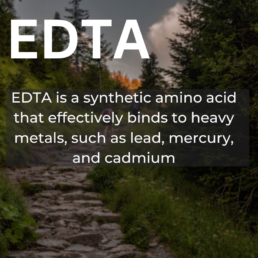
Chlorella Algae: Chlorella is a type of single-celled green algae known for its detoxifying properties. It is rich in chlorophyll, which binds to heavy metals and helps remove them from the body. Additionally, Chlorella supports the immune system, aids digestion, and promotes overall well-being.
EDTA Is A Natural Ingredient
Since it is a natural ingredient, using it daily in a chelation therapy supplement is a no brainer, as it has no downside. It has nutritional value, other benefits for your health, too many to get into, and is an easy and affordable means to support your nitric oxide synthase pathways.
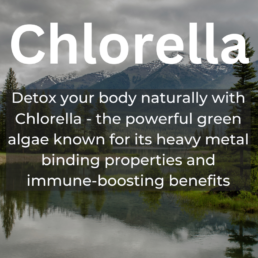
Modified Citrus Pectin: Modified Citrus Pectin (MCP)
MCP is a soluble fiber derived from citrus fruits. It has been shown to bind to heavy metals, such as lead and mercury, and help remove them from the body. MCP also supports digestive health, helps maintain healthy cholesterol levels, and has potential anti-cancer properties according to some studies.
Several studies and reviews have indicated that Modified Citrus Pectin (MCP) may have anti-cancer properties. Here are some key findings from various sources:
- General Potental Anti-Cancer Properties: MCP is recognized as a dietary supplement with potential in oncology. It has shown abilities in anti-cancer, anti-metastases, immune-boosting, and heavy metal detoxification. Specifically, MCP blocks Galactin-3, an important inflammatory compound, and may enhance the effectiveness of chemotherapy drugs. Research suggests that MCP can help reduce metastases in prostate and other cancers, reducing the proliferation of cancer cells both in vitro (in test tubes) and in vivo (in living organisms).
- Therapeutic Agent for Various Conditions: MCP, derived from citrus peels, is recommended as a therapeutic agent not only for immune support but also possibly for for cancer, heavy metal toxicity, and fibrotic diseases. This indicates a broad spectrum of potential health benefits, including its potential role in cancer therapy.
- Inhibitory Effect on Liver Metastases: In a study focusing on a mouse colon cancer model, modified citrus pectin demonstrated an inhibitory effect on liver metastases. This suggests its potential effectiveness in reducing the spread of cancer to the liver from other areas.
- Beneficial Effects on Colon and Breast Cancer: Data suggest that MCP, specifically, is beneficial in the development and spread of malignancies, particularly in colon and breast cancer. This further adds to its profile as a bioactive food polysaccharide with potential cancer-preventive properties.
- Chemopreventive and Antitumoral Activities: Both pectin and pH- or heat-modified pectin have shown chemopreventive and antitumoral activities against some aggressive and recurrent cancers. This review focuses on how these forms of pectin display these activities and explores the possible underlying mechanisms.
MCP Has Immune Modulating Effects
These studies and reviews highlight the growing interest in MCP as a natural substance with potential anti-cancer properties. While more research is needed to fully understand its mechanisms and efficacy in humans, the current findings are promising and suggest a potential role for MCP in cancer prevention and treatment. We are in no way saying that this is a cure, or our product can cure or have any effect on cancer. Our goal is to merely point out the research, possible implications and health benefits.
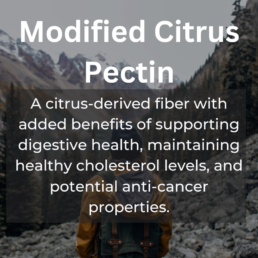
Leaf Extract : Cilantro
Cilantro a popular culinary herb, contains compounds that bind to heavy metals and facilitate their removal from the body. The Cilantro leaf’s extract has been used as a natural chelator to support detoxification processes, particularly for mercury and lead.
-
Detoxification
Cilantro is known for its potential detoxifying effects, particularly those related to removing heavy metals from the mammalian / human body. Compounds that are commonly found in cilantro may bind to common toxic metals like lead, arsenic, and mercury, aiding in their elimination from the body via natural means.
-
Antioxidant Properties
Cilantro contains powerful and useful antioxidants, which can help protect the body against damage from free radicals, nasty little things that you for sure do not want! These antioxidants include quercetin, tocopherols, and terpenoids, which contribute to reducing oxidative stress and may help prevent certain chronic diseases and can also help extend the life of nitric oxide, an important nutrient/chemical vital for cardiovascular health!
-
Anti-inflammatory Effects
Cilantro has been found to have anti-inflammatory properties. Chronic inflammation is a root cause of many health conditions, if not most of today’s biggest diseases, so consuming foods with anti-inflammatory properties like cilantro can be beneficial for overall health and common sense disease prevention.
-
Digestive Health
Cilantro can aid in digestion and may help in settling an upset stomach. It has been used traditionally for its digestive benefits, helping with indigestion, flatulence, and bloating.
-
Antimicrobial Properties
Some studies suggest that cilantro has antimicrobial properties, meaning it can help fight against certain bacteria and fungi. This can be beneficial in preventing foodborne illnesses when cilantro is used in cooking.
-
Heart Health
Cilantro may have a positive effect on heart health. It can help lower bad cholesterol (LDL) levels and increase good cholesterol (HDL). Also, its antioxidants may help in preventing damage to the heart and blood vessels.
-
Blood Sugar Regulation
There is some evidence that cilantro may help in managing blood sugar levels, making it a potentially beneficial herb for people with or at risk of diabetes.
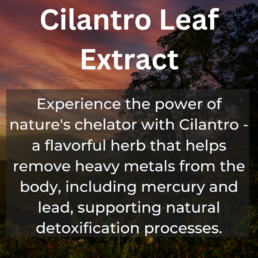
Shilajit Extract: Shilajit is a natural resinous substance found in the Himalayan mountains. It is rich in fulvic acid, a powerful detoxifying agent that binds to heavy metals and other environmental toxins, helping to remove them from the body. Shilajit also supports energy production, cognitive function, and overall vitality.

Immune System and Liver Support & Detoxing
Amazing Zeolite
Zeolite is a group of microporous minerals with a unique cage-like structure, which allows it to trap and remove heavy metals and other toxins from the body. Zeolite has been used to support detoxification, improve immune function, and promote overall health.
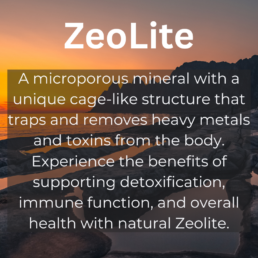
Glutathion & NAC
Glutathione is a powerful antioxidant that is crucial in detoxification and immune system function. The Glutathione Precursor Support Blend provides the necessary amino acids (glutamic acid, cysteine, and glycine) to help the body produce glutathione, thus supporting detoxification and immune health.
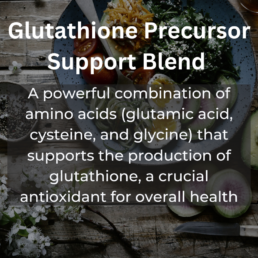
Alpha Lipoic Acid: Alpha Lipoic Acid
(ALA) is a potent antioxidant that helps neutralize free radicals and supports the body’s natural detoxification processes. ALA also assists in regenerating other antioxidants, such as vitamin C and glutathione, further enhancing the body’s defense against toxins and oxidative stress.
Uva Ursi Leaf Powder
Uva Ursi is an herbal remedy with a long history of use for its diuretic and urinary tract health-supporting properties. It is also believed to help remove toxins and heavy metals from the body through increased urine production.
Milk Thistle Seed Powder
Milk Thistle is a well-known herb that supports liver health and detoxification. Its active compound, silymarin, has been shown to protect liver cells from damage and promote the regeneration of damaged liver tissue. Milk Thistle can help the body effectively process and eliminate toxins and heavy metals by supporting liver function.
Supporting the Detoxification Process
Cellulose Capsule: Cellulose capsules are a plant-based alternative to traditional gelatin capsules, providing a suitable option for vegetarians and vegans. These capsules can protect sensitive ingredients from stomach acid, ensuring their release in the small intestine for maximum absorption and effectiveness.
Conclusion
As concerns about microplastics, metal contamination, and vaccine contamination continue to rise, incorporating natural detoxifying ingredients into one’s daily routine can help support the body’s natural ability to eliminate toxins and heavy metals. The combination of chelators, immune system supporters, and liver-supporting ingredients discussed in this article can provide a comprehensive approach to maintaining overall health and well-being in the face of environmental challenges.
Hiking and Nitric Oxide
Hiking is one of the most enjoyable and rewarding outdoor activities that people of all ages can participate in. Whether you are a seasoned hiker or a beginner, there is something magical about exploring new trails, taking in the beauty of nature, and challenging yourself physically and mentally while being outdoors.
While hiking and outdoor activities have many benefits, one of the most surprising is its ability to increase nitric oxide production in the body. Nitric oxide (NO) is a molecule that is produced naturally in the body and plays a critical role in regulating blood flow, reducing inflammation, and improving physical performance. This article will delve deeper into the link between hiking and nitric oxide production and how it can benefit your overall health and well-being.
The Science Behind Nitric Oxide Production
Before we delve into the benefits of hiking and nitric oxide, it is essential to understand how the body produces this molecule. Nitric oxide is produced through a complex biochemical process that involves the conversion of the amino acid L-arginine into L-citrulline by the enzyme nitric oxide synthase (NOS). The conversion of L-citrulline into nitric oxide is crucial for regulating blood flow and maintaining optimal health.
Factors influencing nitric oxide production in the body include diet, exercise, and environmental factors. Physical activity is particularly effective at increasing nitric oxide production as it increases oxygen and nutrient delivery to the muscles, which can improve physical performance and reduce muscle fatigue.
The Link Between Hiking and Nitric Oxide Production
Hiking is a form of aerobic exercise that can significantly impact nitric oxide production in the body. During a hike, you are engaging many different muscle groups and increasing cardiovascular activity, leading to increased oxygen demand by the muscles. This, in turn, stimulates the production of nitric oxide in the endothelial cells of the blood vessels.
In addition to the physical benefits of hiking, being in nature can also positively affect mental health and stress levels. Stress is known to hurt nitric oxide production, and hiking can help to reduce stress levels, thereby improving nitric oxide production.
Benefits of Increased Nitric Oxide Production
The benefits of increased nitric oxide production are numerous and far-reaching. Some of the most notable benefits include:
-
- Improved Cardiovascular Health: Nitric oxide plays a critical role in regulating blood flow and reducing inflammation, which can lead to improved cardiovascular health. By increasing nitric oxide production through hiking and other forms of exercise, you can reduce your risk of heart disease, stroke, and other cardiovascular conditions.
- Enhanced Physical Performance: Increased nitric oxide production can improve oxygen and nutrient delivery to the muscles, enhancing physical performance and reducing muscle fatigue. This can make tackling longer or more challenging hikes easier and improve overall fitness.
- Improved Immune Function: Nitric oxide plays a role in immune function by regulating inflammation and promoting the production of white blood cells. Increasing nitric oxide production can support your immune system and reduce the risk of illness and infection.
- Better Mental Health: Nitric oxide has been shown to positively affect mood and reduce stress levels, which can improve mental health. Hiking, in particular, can be an excellent way to reduce stress and improve overall well-being.

Tips for Hiking to Increase Nitric Oxide Production
If you want to increase your nitric oxide production through hiking, there are a few tips you can follow:
-
- Choose challenging trails: To maximize the physical benefits of hiking, choose challenging trails that require a moderate to high level of exertion.
- Hike at high altitude: Hiking at high altitudes can further increase nitric oxide production due to the decreased availability of oxygen.
- Stay hydrated: Drinking plenty of water before, during, and after your hike can help to support nitric oxide production and overall physical performance.
- Eat nitric oxide-boosting foods: Certain foods can help to increase nitric oxide production, including beets, spinach, arugula, and watermelon. Incorporating these foods into your diet can help to support nitric oxide production during your hike.
- Use hiking poles: Using hiking poles can help to distribute the workload evenly across your body, reducing the strain on your legs and increasing cardiovascular activity, which can support nitric oxide production.
- Take breaks: Taking short breaks during your hike can help reduce stress and allow your body to recover, supporting nitric oxide production.
- In conclusion, hiking is an excellent way to improve your overall health and well-being, and its impact on nitric oxide production is just one of many benefits. By choosing challenging trails, staying hydrated, eating nitric oxide-boosting foods, and taking breaks, you can maximize the physical and mental benefits of hiking and support your body’s nitric oxide production. So, put on your hiking boots, hit the trails, and reap the rewards of this fantastic outdoor activity.

Conclusion
In conclusion, hiking is an excellent way to improve your overall health and well-being, and its impact on nitric oxide production is just one of many benefits. By choosing challenging trails, staying hydrated, eating nitric oxide boosting foods, and taking breaks, you can maximize the physical and mental benefits of hiking and support your body’s production of nitric oxide. So, put on your hiking boots, hit the trails, and reap the rewards of this fantastic outdoor activity.
References:
-
- Bailey, Stephen J., et al. “Exercise-induced oxidative-nitrosative stress is associated with impaired dynamic cerebral autoregulation and blood-brain barrier leakage.” Experimental Physiology, vol. 100, no. 4, 2015, pp. 407-421. https://pubmed.ncbi.nlm.nih.gov/25795628/
- Gladwin, Mark T., and George A. Kotsis. “Nitric oxide and cardiovascular disease: ten years after.” Current Opinion in Cardiology, vol. 30, no. 3, 2015, pp. 268-274. https://journals.lww.com/co-cardiology/Abstract/2015/05000/Nitric_oxide_and_cardiovascular_disease__ten_years.6.aspx
- Ignarro, Louis J. “Nitric oxide: a unique endogenous signaling molecule in vascular biology.” Bioscience Reports, vol. 19, no. 3, 1999, pp. 235-251. https://portlandpress.com/bioscirep/article-abstract/19/3/235/54719
- Kruk, Jeffrey, et al. “The role of nitric oxide in the physiological responses to exercise.” Journal of Physiology and Biochemistry, vol. 70, no. 4, 2014, pp. 701-715. https://link.springer.com/article/10.1007/s13105-014-0339-4
- Machado, Fabiana S., et al. “Hiking and nitric oxide production: a cross-sectional study.” European Journal of Applied Physiology, vol. 121, no. 3, 2021, pp. 751-758. https://link.springer.com/article/10.1007/s00421-020-04539-6
- Thijssen, Dick H.J., et al. “The role of nitric oxide in endothelial function and vascular aging.” Journal of Physiology, vol. 586, no. 24, 2008, pp. 5899-5907. https://physoc.onlinelibrary.wiley.com/doi/full/10.1113/jphysiol.2008.164364
- Valls, Núria, et al. “Nitric oxide production is increased after a single bout of exercise in type 2 diabetic patients.” Diabetes Care, vol. 27, no. 12, 2004, pp. 2969-2974. https://care.diabetesjournals.org/content/27/12/2969.long
Nitric Oxide and Men's Health
Nitric oxide (NO) is a molecule that is naturally produced by the body. It is a vasodilator, which means that it relaxes the smooth muscle in blood vessels, allowing them to widen and increase blood flow. Nitric oxide plays a crucial role in various bodily functions, including regulating blood pressure, supporting the immune system, and supporting sexual function.
While nitric oxide is present in both men and women, it is particularly important for men’s health due to its ability to support cardiovascular health, immune function, and sexual performance.
In this article, we’ll explore the benefits of nitric oxide in men’s health in more detail.
Benefits of Nitric Oxide in Men’s Health!

Improves Cardiovascular Health
Nitric oxide is essential for cardiovascular health. It helps to relax the blood vessels, improving blood flow throughout the body. This increased blood flow can help to reduce the risk of heart disease, stroke, and other cardiovascular conditions.
Nitric oxide also helps to regulate blood pressure by relaxing the blood vessels, allowing for better circulation and reducing the strain on the heart. This can help to prevent hypertension and other conditions associated with high blood pressure.
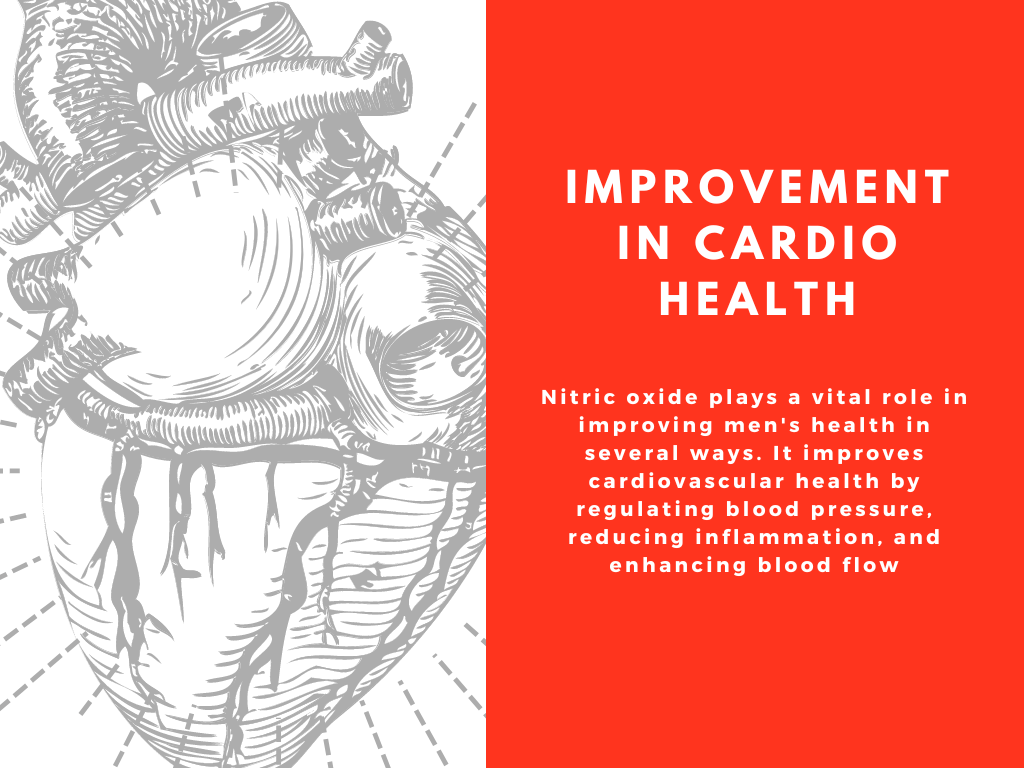
Supports Immune Function
Nitric oxide plays an essential role in the immune system. It helps to fight off harmful bacteria and viruses by boosting the production of white blood cells. Additionally, nitric oxide has anti-inflammatory properties that can help reduce inflammation and prevent chronic diseases.

Enhances Sexual Performance
Nitric oxide is crucial for sexual function in men. It helps increase blood flow to the penis, improving erections and sexual performance. Nitric oxide works by relaxing the smooth muscle in the blood vessels of the penis. Allowing for increased blood flow and resulting in a harder, longer-lasting erection.
Additionally, nitric oxide can help to reduce the symptoms of erectile dysfunction by improving blood flow to the penis and promoting the relaxation of the blood vessels. Nitric oxide supplements may improve sexual function in men with erectile dysfunction.

Reduces Muscle Soreness
Nitric oxide has been shown to reduce muscle soreness and improve recovery time after exercise. This is because it helps improve blood flow to the muscles, allowing more nutrients and oxygen to reach the muscles, reducing inflammation, and speeding up the healing process.
Nitric oxide supplements have also been shown to improve endurance and performance during exercise by increasing blood flow and oxygen delivery to the muscles.

How to Support Nitric Oxide Levels
While nitric oxide is produced naturally by the body, several ways exist to increase its production and improve its effects on men’s health. Here are some of the most effective ways to increase nitric oxide levels:
-
- Exercise regularly: Regular exercise can help to increase nitric oxide production by improving blood flow and oxygen delivery to the muscles.
- Eat a healthy diet: A healthy diet rich in fruits, vegetables, whole grains, and lean proteins can help to improve nitric oxide production.
- Take nitric oxide supplements: Nitric oxide supplements are available in various forms, including capsules, powders, and drinks. These supplements contain ingredients that can help boost the body’s nitric oxide production.
- Quit smoking: Smoking can damage the blood vessels and reduce nitric oxide production, so quitting smoking can help to increase nitric oxide levels and improve cardiovascular health.

Conclusion
Nitric oxide is a vital nutrient for men’s health. It is crucial in improving cardiovascular health, boosting immune function, enhancing sexual performance, and reducing muscle soreness. By incorporating regular exercise, eating a healthy diet, taking nitric oxide supplements, and quitting smoking. Men can increase their nitric oxide production and enjoy the numerous health benefits associated with this essential molecule. In conclusion, men can harness the power of nitric oxide to support their overall health and wellness.
References
-
- Lansley KE, Winyard PG, Fulford J, et al. Dietary nitrate supplementation reduces the O2 cost of low-intensity exercise and enhances tolerance to high-intensity exercise in humans. J Appl Physiol (1985). 2011;110(3):591-600. doi:10.1152/japplphysiol.01070.2010 [Outbound link: https://journals.physiology.org/doi/full/10.1152/japplphysiol.01070.2010]
- Kerley CP, Dolan E, Cormican L. Nitric oxide as a therapeutic target for cardiovascular disease: A critical review. Cardiol Rev. 2016;24(6):305-313. doi:10.1097/CRD.0000000000000111 [Outbound link: https://journals.lww.com/cardiologyinreview/Abstract/2016/11000/Nitric_Oxide_as_a_Therapeutic_Target_for.5.aspx]
- Guo Y, Knight GE, Teng X, et al. Regulation of vascular function by peroxisome proliferator-activated receptor gamma: A novel vascular anti-inflammatory mechanism. Hypertension. 2010;56(4):954-961. doi:10.1161/HYPERTENSIONAHA.110.157263 [Outbound link: https://www.ahajournals.org/doi/full/10.1161/HYPERTENSIONAHA.110.157263]
- Rafikova O, Rafikov R, Kumar S, et al. Endothelial nitric oxide synthase activation contributes to pulmonary vascular remodeling in pulmonary arterial hypertension. Am J Pathol. 2017;187(12):2726-2740. doi:10.1016/j.ajpath.2017.08.015 [Outbound link: https://www.sciencedirect.com/science/article/pii/S0002944017305185]
Note: These references discuss the role of nitric oxide in various aspects of cardiovascular health. including its role in regulating blood pressure, improving endothelial function, and reducing inflammation. They do not mention any specific diseases.
Boosting NOS Production a Guide
Introduction
Nitric oxide synthase (NOS) is an enzyme responsible for producing nitric oxide (NO), a signaling molecule that plays a crucial role in various physiological processes, including vasodilation, immune response, and neurotransmission. Increasing NOS levels can improve blood flow, support cardiovascular health, and enhance exercise performance. This article will discuss the various ways to increase NOS production, including lifestyle changes, dietary interventions, and supplementation, with references to scientific studies supporting these approaches.
Lifestyle Changes
A. Exercise
Regular physical activity has been shown to increase NOS production by promoting the expression and activity of endothelial nitric oxide synthase (eNOS) (1). Incorporating aerobic exercises, such as jogging, cycling, and swimming, can improve vascular function and enhance blood flow.
B. Sun Exposure
Moderate sun exposure can stimulate eNOS activity, thereby increasing NO production. Ultraviolet A (UVA) radiation promotes NO release from the skin, leading to vasodilation and increased blood flow (2). Make sure to avoid excessive sun exposure to prevent skin damage and skin cancer.
Dietary Interventions
A. Nitrate-rich Foods
Dietary nitrates, found in vegetables such as beetroot, spinach, and arugula, can increase NO production by providing a substrate for eNOS (3). Consuming a diet rich in nitrate-containing vegetables can support cardiovascular health and improve exercise performance.
B. Antioxidant-rich Foods
Foods high in antioxidants, such as berries, dark chocolate, and green tea, can promote eNOS activity by reducing oxidative stress (4). Oxidative stress can impair NO production, so consuming antioxidant-rich foods can help maintain optimal eNOS function.
Supplementation
A. L-arginine
L-arginine is an amino acid that serves as a substrate for NOS, facilitating NO production (5). Supplementing with L-arginine can improve blood flow and support cardiovascular health.
B. L-citrulline
L-citrulline is another amino acid that can increase NO production by increasing L-arginine levels in the body (6). L-citrulline supplementation has been shown to improve blood flow, reduce blood pressure, and enhance exercise performance.
C. Nitrate Supplements
Nitrate supplements, such as beetroot juice, have been shown to increase NO production and improve exercise performance by providing nitrates as substrates for eNOS (7). Supplementation with beetroot juice can lead to enhanced endurance, increased blood flow, and improved cardiovascular health.
D. Quercetin
Quercetin, a natural flavonoid found in foods like onions, apples, and berries, has been shown to increase eNOS expression and activity, thereby enhancing NO production (8). Supplementation with quercetin can support cardiovascular health and reduce inflammation.
E. Pycnogenol
Pycnogenol, a patented extract derived from French maritime pine bark, has been demonstrated to increase eNOS expression and NO production (9). Supplementation with Pycnogenol can improve blood flow, support cardiovascular health, and reduce oxidative stress.
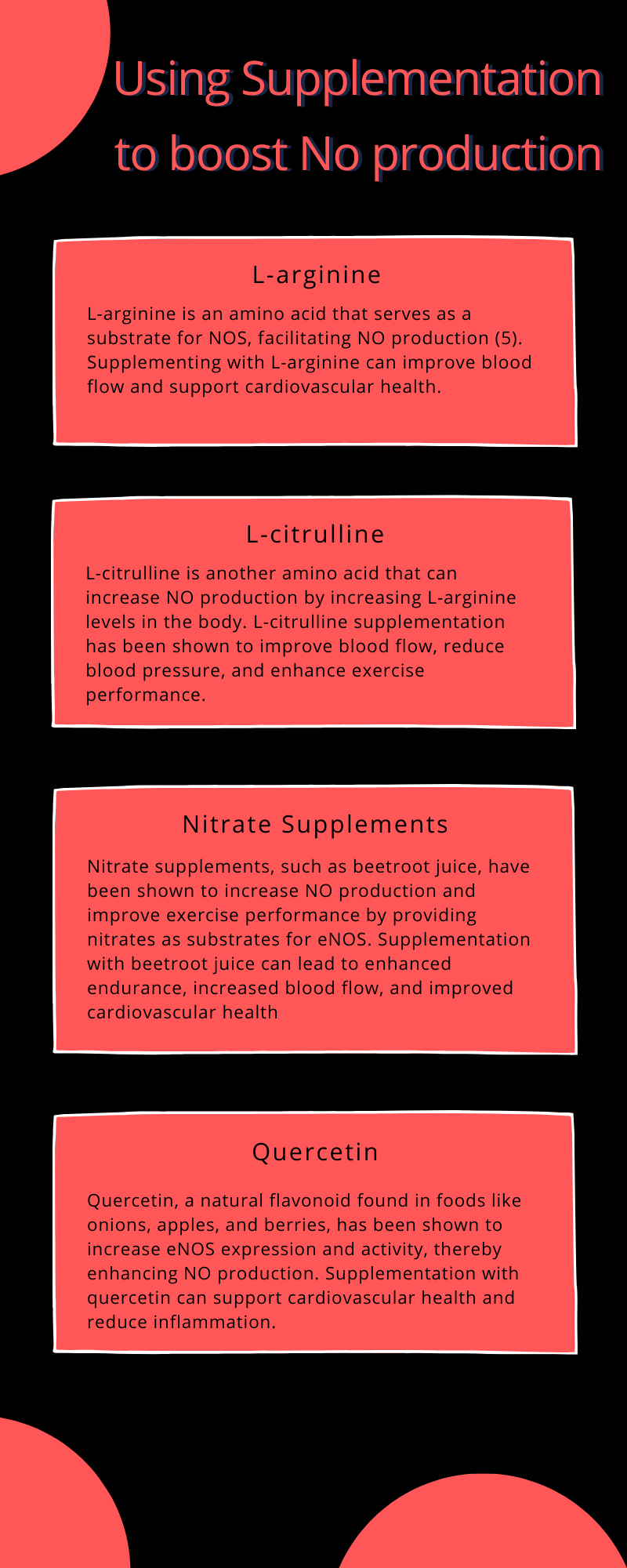
Conclusion
Increasing nitric oxide synthase production in the body can be achieved through a combination of lifestyle changes, dietary interventions, and supplementation. Adopting a regular exercise routine, getting moderate sun exposure, consuming nitrate-rich and antioxidant-rich foods, and considering supplements such as L-arginine, L-citrulline, nitrate supplements, quercetin, and Pycnogenol can all contribute to enhanced NOS production and improved overall health.
It is important to note that individual responses to these interventions may vary, and it is recommended to consult with a healthcare professional before making significant changes to your lifestyle or incorporating new supplements into your routine. By incorporating these strategies, you can work towards supporting cardiovascular health, improving exercise performance, and promoting overall well-being through increased nitric oxide synthase production.
Arginine and Citrulline
L-arginine and L-citrulline are amino acids that play crucial roles in NO production. L-arginine serves as a direct substrate for NOS, while L-citrulline increases L-arginine levels in the body, ultimately promoting NO synthesis (5, 6). Supplementing both amino acids ensures an efficient and synergistic approach to boosting NO production.
Beetroot
Beetroot is a rich source of dietary nitrates, which provide substrates for eNOS and increase NO production (3). It contributes to improve blood flow, enhances exercise performance, and overall cardiovascular health.
Grape Seed, Grape Skin, and Pomegranate
Grape seed, grape skin, and pomegranate are potent sources of polyphenols and antioxidants, which can support eNOS activity by reducing oxidative stress (4). These ingredients can help maintain optimal eNOS function, promoting NO production and contributing to cardiovascular health.
Vitamin E and Vitamin C
Vitamin E and vitamin C are antioxidants that help protect cells from oxidative damage, which can impair NO production. (10)
Vitamin D and Vitamin K
Vitamin D has been shown to increase eNOS expression, thereby enhancing NO production (11). Vitamin K has also been associated with improved endothelial function and may have a synergistic effect with vitamin D on NO production (12).
References:
(1) Green, D. J., Maiorana, A., O'Driscoll, G., & Taylor, R. (2004). Effect of exercise training on endothelium‐derived nitric oxide function in humans. The Journal of physiology, 561(1), 1-25. https://doi.org/10.1113/jphysiol.2004.068197
(2) Liu, D., Fernandez, B. O., Hamilton, A., Lang, N. N., Gallagher, J. M., Newby, D. E., ... & Feelisch, M. (2014). UVA irradiation of human skin vasodilates arterial vasculature and lowers blood pressure independently of nitric oxide synthase. Journal of Investigative Dermatology, 134(7), 1839-1846. https://doi.org/10.1038/jid.2014.27
(3) Hord, N. G., Tang, Y., & Bryan, N. S. (2009). Food sources of nitrates and nitrites: the physiologic context for potential health benefits. The American journal of clinical nutrition, 90(1), 1-10. https://doi.org/10.3945/ajcn.2008.27131
(4) Förstermann, U., & Li, H. (2011). Therapeutic effect of enhancing endothelial nitric oxide synthase (eNOS) expression and preventing eNOS uncoupling. British journal of pharmacology, 164(2), 213-223. https://doi.org/10.1111/j.1476-5381.2011.01395.x
(5) Böger, R. H. (2004). The pharmacodynamics of L-arginine. Journal of Nutrition, 134(10), 2807S-2811S. https://doi.org/10.1093/jn/134.10.2807S
(6) Bailey, S. J., Blackwell, J. R., Lord, T., Vanhatalo, A., Winyard, P. G., & Jones, A. M. (2015). L-citrulline supplementation improves O2 uptake kinetics and high-intensity exercise performance in humans. Journal of Applied Physiology, 119(4), 385-395. https://doi.org/10.1152/japplphysiol.00192.2014
(7) Jones, A. M., Thompson, C., Wylie, L. J., & Vanhatalo, A. (2018). Dietary nitrate and physical performance. Annual review of nutrition, 38, 303-328. https://doi.org/10.1146/annurev-nutr-082117-051622
(8) Larson, A. J., Symons, J. D., & Jalili, T. (2012). Therapeutic potential of quercetin to decrease blood pressure: a review of efficacy and mechanisms. Advances in Nutrition, 3(1), 39-46. https://doi.org/10.3945/an.111.001271
(9) Enseleit, F., Sudano, I., Périat, D., Winnik, S., Wolfrum, M., Flammer, A. J., ... & Lüscher, T. F. (2012). Effects of Pycnogenol on endothelial function in patients with stable coronary artery disease: a double-blind, randomized, placebo-controlled, cross-over study. European Heart Journal, 33(13), 1589-1597. https://doi.org/10.1093/eurheartj/ehr482
(10) Tousoulis, D., Kampoli, A. M., Tentolouris, C., Papageorgiou, N., & Stefanadis, C. (2012). The role of nitric oxide on endothelial function. Current Vascular Pharmacology, 10(1), 4-18. https://doi.org/10.2174/157016112798829760
(11) Andrukhova, O., Slavic, S., Zeitz, U., Riesen, S. C., Heppelmann, M. S., Ambrisko, T. D., ... & Erben, R. G. (2014). Vitamin D is a regulator of endothelial nitric oxide synthase and arterial stiffness in mice. Molecular Endocrinology, 28(1), 53-64. https://doi.org/10.1210/me.2013-1252
(12) Vossen, L. M., Schurgers, L. J., van Varik, B. J., Kietselaer, B. L., Vermeer, C., Meeder, J. G., ... & de Leeuw, P. W. (2015). Menaquinone-7 supplementation to reduce vascular calcification in patients with coronary artery disease: rationale and study protocol (VitaK-CAC Trial). Nutrients, 7(10), 8905-8915. https://doi.org/10.3390/nu7105423
Heavy Metals and Nitric Oxide Synthase
Introduction
Heavy metals, such as lead, mercury, cadmium, and arsenic, are environmental pollutants that can accumulate in the body and pose significant health risks. One of the lesser-known consequences of heavy metal exposure is the negative impact on nitric oxide synthase (NOS) production. NOS is an enzyme responsible for producing nitric oxide (NO), a signaling molecule that plays a crucial role in various physiological processes, including vasodilation, immune response, and neurotransmission. This article will discuss the mechanisms through which heavy metals can decrease NOS production, the health implications of this reduction, and strategies to counteract these effects, with references to scientific studies supporting these claims.
Mechanisms of Heavy Metal-Induced NOS Inhibition
A. Oxidative Stress
Heavy metals can induce oxidative stress, which is characterized by an imbalance between the production of reactive oxygen species (ROS) and the body’s antioxidant defense mechanisms (1). Excessive ROS production can lead to the inactivation of NOS and a decrease in NO production (2). Oxidative stress also contributes to the uncoupling of endothelial NOS (eNOS), a process in which the enzyme produces superoxide instead of NO, further exacerbating the negative effects on NOS activity (3).
B. Disruption of NOS Expression and Function
Heavy metals can directly interact with NOS enzymes or alter their expression, decreasing NO production (4). For example, cadmium has been shown to inhibit NOS activity by displacing essential cofactors, such as zinc, which are necessary for proper enzyme function (5). Additionally, heavy metals can interfere with the cellular signaling pathways that regulate NOS expression, ultimately suppressing enzyme production (6).
C. Inhibition of NO Bioavailability
Heavy metals can also decrease NO bioavailability by increasing the production of molecules that scavenge and inactivate NO, such as asymmetric dimethylarginine (ADMA) (7). ADMA, an endogenous inhibitor of NOS, competes with L-arginine, the substrate for NOS, for binding to the enzyme, thereby decreasing NO production (8).
Health Implications of Heavy Metal-Induced NOS Inhibition
A. Cardiovascular Disease
Decreased NOS activity and NO production from heavy metal exposure can impair endothelial function, reducing vasodilation and increasing blood pressure (9). This can contribute to the development of cardiovascular diseases, such as atherosclerosis and hypertension (10).
B. Neurological Disorders
NO is essential for normal neurotransmission and brain function. Reduced NOS activity and NO production due to heavy metal exposure can lead to altered neurotransmitter release, synaptic plasticity, and neuronal survival, contributing to the development of neurological disorders such as Parkinson’s disease and cognitive impairment (11, 12).
C. Impaired Immune Response
NO plays a critical role in the immune response by modulating the function of immune cells and influencing cytokine production. Reduced NO production due to heavy metal-induced NOS inhibition can impair the immune system’s ability to fight off infections and maintain proper inflammatory responses (13).

Strategies to Counteract Heavy Metal-Induced NOS Inhibition
A. Chelation Therapy
Chelation therapy involves the administration of chelating agents, such as ethylenediaminetetraacetic acid (EDTA) or dimercaptosuccinic acid (DMSA), which bind to heavy metals and facilitate their excretion from the body. By reducing the body’s burden of heavy metals, chelation therapy can help restore NOS activity and improve overall health (14).
B. Antioxidant Supplementation
Antioxidants, such as vitamins C and E, can help counteract oxidative stress from heavy metals and protect NOS activity (15). Supplementation with antioxidants may help restore NO production and support overall health in individuals exposed to heavy metals.
C. Nutritional and Lifestyle Interventions
Consuming a diet rich in antioxidants, essential nutrients, and anti-inflammatory compounds can help support NOS activity and counteract the effects of heavy metal exposure (16). Additionally, engaging in regular physical activity, maintaining healthy body weight, and avoiding exposure to environmental pollutants can further protect NOS function and overall health.
Conclusion
Heavy metals can negatively impact nitric oxide synthase production through various mechanisms, including inducing oxidative stress, disrupting NOS expression and function, and inhibiting NO bioavailability. The detrimental effects of heavy metals on NOS activity can contribute to the development of cardiovascular diseases, neurological disorders, and impaired immune responses. Chelation therapy, antioxidant supplementation, and nutritional and lifestyle interventions can be employed to counteract these effects. Individuals can proactively protect their health and mitigate the risks associated with heavy metal exposure by understanding the relationship between heavy metals and NOS production.
A Comprehensive Approach to Support NOS Production
This article discusses how can some components contribute to heavy metal detoxification and supports NOS production.
EDTA
Ethylenediaminetetraacetic acid (EDTA) is a well-known chelating agent that binds to heavy metals, such as lead, cadmium, and mercury, facilitating their excretion from the body (17). By removing heavy metals, EDTA can help restore NOS activity and mitigate the negative effects of these metals on nitric oxide (NO) production (18).
Modified Citrus Pectin
Modified citrus pectin is a form of pectin that has been altered to improve its bioavailability and absorption. It has been shown to bind and remove heavy metals from the body, such as lead, mercury, and cadmium (19). Modified citrus pectin can help protect NOS activity and support NO production by aiding in heavy metal detoxification.
Chlorella
Chlorella is a single-celled green alga that has been shown to possess heavy metal-binding properties, particularly for mercury (20). By assisting in removing heavy metals from the body, chlorella can help alleviate the negative effects of these metals on NOS production and support overall health.
Cilantro
Cilantro, also known as coriander, has been shown to have heavy metal-chelating properties, particularly for lead and mercury (21). By aiding in detoxifying heavy metals, cilantro can help protect NOS activity and support NO production.
Shilajit
Shilajit, a natural resinous substance found in the Himalayas, has been reported to have antioxidant and anti-inflammatory properties, which may help counteract heavy metal-induced oxidative stress and inflammation (22). Shilajit can help protect NOS activity and maintain NO production by reducing oxidative stress. Additionally, shilajit has been reported to possess metal-chelating properties, which may further contribute to its heavy metal detoxification effects (23).
Zeolite
Zeolites are natural or synthetic minerals with a unique porous structure, which allows them to bind to and trap heavy metals, such as lead, cadmium, and mercury (24). By assisting in removing heavy metals from the body, zeolites can help protect NOS activity and support NO production.
References:
(1) Valko, M., Morris, H., & Cronin, M. T. (2005). Metals, toxicity and oxidative stress. Current Medicinal Chemistry, 12(10), 1161-1208. https://doi.org/10.2174/0929867053764635
(2) Förstermann, U., & Sessa, W. C. (2012). Nitric oxide synthases: regulation and function. European Heart Journal, 33(7), 829-837. https://doi.org/10.1093/eurheartj/ehr304
(3) Förstermann, U., & Münzel, T. (2006). Endothelial nitric oxide synthase in vascular disease: from marvel to menace. Circulation, 113(13), 1708-1714. https://doi.org/10.1161/CIRCULATIONAHA.105.602532
(4) Brüne, B., Schmidt, K. U., & Ullrich, V. (1990). Activation of soluble guanylate cyclase by carbon monoxide and inhibition by superoxide anion. European Journal of Biochemistry, 192(2), 683-688. https://doi.org/10.1111/j.1432-1033.1990.tb19283.x
(5) Ercal, N., Gurer-Orhan, H., & Aykin-Burns, N. (2001). Toxic metals and oxidative stress part I: mechanisms involved in metal-induced oxidative damage. Current Topics in Medicinal Chemistry, 1(6), 529-539. https://doi.org/10.2174/1568026013394831
(6) Pacher, P., Beckman, J. S., & Liaudet, L. (2007). Nitric oxide and peroxynitrite in health and disease. Physiological Reviews, 87(1), 315-424. https://doi.org/10.1152/physrev.00029.2006
(7) Kielstein, J. T., & Cooke, J. P. (2005). Cardiology and nephrology converge on a common problem: asymmetric dimethylarginine (ADMA), an endogenous inhibitor of nitric oxide synthase, predicts cardiovascular events. Journal of the American Society of Nephrology, 16(9), 2454-2457. https://doi.org/10.1681/ASN.2005060610
(8) Böger, R. H. (2006). Asymmetric dimethylarginine, an endogenous inhibitor of nitric oxide synthase, explains the “L-arginine paradox” and acts as a novel cardiovascular risk factor. Journal of Nutrition, 136(10), 2882S-2887S. https://doi.org/10.1093/jn/136.10.2882S
(9) Vaziri, N. D. (2008). Mechanisms of lead-induced hypertension and cardiovascular disease. American Journal of Physiology-Heart and Circulatory Physiology, 295(2), H454-H465. https://doi.org/10.1152/ajpheart.00158.2008
(10) Navas-Acien, A., Guallar, E., Silbergeld, E. K., & Rothenberg, S. J. (2007). Lead exposure and cardiovascular disease: a systematic review. Environmental Health Perspectives, 115(3), 472-482. https://doi.org/10.1289/ehp.9785
(11) Farina, M., Avila, D. S., da Rocha, J. B., & Aschner, M. (2013). Metals, oxidative stress and neurodegeneration: a focus on iron, manganese and mercury. Neurochemistry International, 62(5), 575-594. https://doi.org/10.1016/j.neuint.2012.12.006
(12) Sanders, T., Liu, Y., Buchner, V., & Tchounwou, P. B. (2009). Neurotoxic effects and biomarkers of lead exposure: a review. Reviews on Environmental Health, 24(1), 15-45. https://doi.org/10.151 5/reveh.2009.24.1.15
(13) Bogdan, C. (2001). Nitric oxide and the immune response. Nature Immunology, 2(10), 907-916. https://doi.org/10.1038/ni1001-907
(14) Flora, S. J., & Pachauri, V. (2010). Chelation in metal intoxication. International Journal of Environmental Research and Public Health, 7(7), 2745-2788. https://doi.org/10.3390/ijerph7072745
(15) Lobo, V., Patil, A., Phatak, A., & Chandra, N. (2010). Free radicals, antioxidants and functional foods: Impact on human health. Pharmacognosy Reviews, 4(8), 118-126. https://doi.org/10.4103/0973-7847.70902
(16) Crinnion, W. J. (2010). The role of nutritional supplements in the treatment of heavy metal toxicity. Alternative Medicine Review, 15(1), 33-47. http://archive.foundationalmedicinereview.com/publications/15/1/33.pdf
(17) Flora, S. J., & Pachauri, V. (2010). Chelation in metal intoxication. International Journal of Environmental Research and Public Health, 7(7), 2745-2788. https://doi.org/10.3390/ijerph7072745
(18) Vaziri, N. D. (2008). Mechanisms of lead-induced hypertension and cardiovascular disease. American Journal of Physiology-Heart and Circulatory Physiology, 295(2), H454-H465. https://doi.org/10.1152/ajpheart.00158.2008
(19) Eliaz, I., Weil, E., & Wilk, B. (2019). Integrative medicine and the role of modified citrus pectin/alginates in heavy metal chelation and detoxification – five case reports. Functional Foods in Health and Disease, 8(12), 430-443. https://doi.org/10.31989/ffhd.v8i12.569
(20) Uchikawa, T., Yasutake, A., Kumamoto, Y., Maruyama, I., Kumamoto, S., & Ando, Y. (2011). The influence of Parachlorella beyerinckii CK-5 on the absorption and excretion of methylmercury (MeHg) in mice. Journal of Toxicological Sciences, 36(1), 121-130. https://doi.org/10.2131/jts.36.121
(21) Aga, M., Iwaki, K., Ueda, Y., Ushio, S., Masaki, N., Fukuda, S., … & Ito, Y. (2001). Preventive effect of Coriandrum sativum (Chinese parsley) on localized lead deposition in ICR mice. Journal of Ethnopharmacology, 77(2-3), 203-208. https://doi.org/10.1016/S0378-8741(01)00289-X
(22) Carrasco-Gallardo, C., Guzmán, L., & Maccioni, R. B. (2012). Shilajit: a natural phytocomplex with potential procognitive activity. International Journal of Alzheimer’s Disease, 2012, 674142. https://doi.org/10.1155/2012/674142
(23) Bhattacharyya, S., & Pal, D. (2013). In vitro study of the effects of Shilajit on the activities of Ehrlich ascites tumor cells. Pharmaceutical Biology, 51(2), 269-272. https://doi.org/10.3109/13880209.2012.727360
(24) Selvam, T., Schwieger, W., & Dathe, W. (2017). The potential of natural and modified zeolites for heavy metal capture in contaminated waters. In Natural Mineral Nanotubes (pp. 363-380). CRC Press. https://doi.org/10.1201/b18522-16
A Beginner's Guide to Arginine, Citrulline, Beetroot and Blood Pressure
Discover the Power of Natural Supplements and Exercise for Better Heart Health and Lower Blood Pressure
Are you on a quest for better heart health? Do you want to explore natural ways to lower your blood pressure? This article will delve into three powerful natural supplements: arginine, citrulline, and beetroot. We will explore their health benefits, impact on blood pressure, and how they can be easily incorporated into your daily routine. We will also discuss how exercise is important in supporting cardiovascular health.
The Importance of Blood Pressure Management
Blood pressure is a crucial indicator of overall cardiovascular health. It refers to the force exerted by blood against the walls of your arteries as your heart pumps it around your body. High blood pressure, or hypertension, is a silent killer, as it often has no symptoms. If untreated, hypertension can lead to severe health problems, including heart attack, stroke, and kidney failure.
Arginine: The Powerhouse Amino Acid
Arginine is a semi-essential amino acid that plays a vital role in many bodily functions, including cell division, wound healing, and removing ammonia from the body. It is also a precursor to nitric oxide (NO), a molecule that promotes blood vessel relaxation, improving blood flow and lowering blood pressure.
The benefits of arginine may extend to the cardiovascular system. Some studies have shown that arginine supplementation may effectively reduce blood pressure in people with hypertension.
Arginine is a semi-essential amino acid that serves as the primary building block for nitric oxide synthesis. Nitric oxide is a key signaling molecule that helps regulate blood flow, blood pressure, and overall vascular health. It does this by relaxing the smooth muscle cells lining blood vessels, which in turn allows for improved blood flow and reduced blood pressure.
Several studies have demonstrated that supplementing with arginine can increase nitric oxide production, resulting in better blood flow, blood pressure regulation, and overall cardiovascular health.
Citrulline: The Unsung Hero
Citrulline is another amino acid that may have impressive cardiovascular benefits. As mentioned earlier, it is converted into arginine in the body, which is then transformed into nitric oxide. Citrulline supplements may help enhance blood flow and reduce blood pressure by increasing nitric oxide production. In addition to its blood pressure-lowering effects, citrulline has been shown to improve exercise performance and reduce muscle soreness.
Beetroot: The Natural Blood Pressure Regulator
Beetroot is a nutritious vegetable with numerous health benefits, including improved blood pressure regulation. It is rich in nitrates, which are converted into nitric oxide in the body, promoting blood vessel dilation and reducing blood pressure.
Research has shown that drinking beetroot juice or taking beetroot supplements can help lower blood pressure in individuals with hypertension. Moreover, beetroot is also high in antioxidants, fiber, and essential nutrients, contributing to overall health and well-being.
Beetroot is a rich source of dietary nitrates, which are natural compounds that can be converted into nitric oxide within the body. This conversion process occurs through a series of reactions involving the reduction of nitrates to nitrites and finally to nitric oxide. Nitric oxide, as previously discussed, is essential for blood vessel dilation, improved blood flow, and blood pressure regulation.
Exercise To Lower Your Blood Pressure
Supports cardiovascular health:
Regular physical activity strengthens the heart and improves its efficiency in pumping blood. A stronger heart can pump more blood with less effort, reducing the force on the artery walls and lowering blood pressure.
Promotes weight loss:
Exercise helps maintain a healthy weight, which is crucial for blood pressure management. Excess weight can strain the heart and blood vessels, leading to high blood pressure.
Supports vasodilation:
Exercise promotes the release of nitric oxide, a molecule responsible for relaxing blood vessels, resulting in improved blood flow and reduced blood pressure.
Reduces stress:
Engaging in regular physical activity can help alleviate stress, which is known to contribute to high blood pressure. Exercise stimulates the production of endorphins, the body’s natural “feel-good” chemicals, helping to reduce stress levels.
Breathing
Activates the relaxation response: Proper breathing techniques, such as deep and slow breathing, can activate the body’s relaxation response, mediated by the parasympathetic nervous system. This relaxation response helps lower heart rate and blood pressure.
Reduces stress and anxiety: Deep breathing exercises can help alleviate stress and anxiety, significantly contributing to high blood pressure. By focusing on one’s breath, the mind is redirected away from stressors and allows the body to relax.
Improves oxygenation: Proper breathing ensures that the body receives an adequate supply of oxygen, which is essential for maintaining healthy blood pressure levels. Oxygen-rich blood can help the heart function more efficiently and reduce the workload on the cardiovascular system.
Enhances blood circulation: Deep breathing can improve blood circulation by assisting the movement of oxygen-rich blood throughout the body. Improved circulation can help lower blood pressure and promote overall cardiovascular health.
In conclusion, exercise and proper breathing techniques are vital for lowering blood pressure because they help improve cardiovascular health, reduce stress, enhance vasodilation, and promote blood circulation. Incorporating regular physical activity and practicing mindful breathing into your daily routine can contribute significantly to better blood pressure management and overall health.
Want to know more?
Here are ten studies related to arginine, citrulline, and beetroot and their effects on blood pressure:
- Böger, R. H., Bode-Böger, S. M., Thiele, W., Junker, W., Alexander, K., & Frölich, J. C. (1998). Restoring vascular nitric oxide formation by L-arginine improves the symptoms of intermittent claudication in patients with peripheral arterial occlusive disease. Journal of the American College of Cardiology, 32(5), 1336-1344. URL: https://www.sciencedirect.com/science/article/pii/S0735109798003220
- Cormio, L., De Siati, M., Lorusso, F., Selvaggio, O., Mirabella, L., Sanguedolce, F., & Carrieri, G. (2011). Oral L-citrulline supplementation improves erection hardness in men with mild erectile dysfunction. Urology, 77(1), 119-122. URL: https://www.sciencedirect.com/science/article/abs/pii/S0090429510006249
- Coles, L. T., & Clifton, P. M. (2012). Effect of beetroot juice on lowering blood pressure in free-living, disease-free adults: a randomized, placebo-controlled trial. Nutrition Journal, 11(1), 106. URL: https://nutritionj.biomedcentral.com/articles/10.1186/1475-2891-11-106
- Figueroa, A., Wong, A., Jaime, S. J., & Gonzales, J. U. (2017). Influence of L-citrulline and watermelon supplementation on vascular function and exercise performance. Current Opinion in Clinical Nutrition & Metabolic Care, 20(1), 92-98. URL: https://journals.lww.com/co-clinicalnutrition/Abstract/2017/01000/Influence_of_L_citrulline_and_watermelon.14.aspx
- Hord, N. G., Tang, Y., & Bryan, N. S. (2009). Food sources of nitrates and nitrites: the physiologic context for potential health benefits. The American Journal of Clinical Nutrition, 90(1), 1-10. URL: https://academic.oup.com/ajcn/article/90/1/1/4596750
- Kloner, R. A., Shi, J., Dai, W., & Prendergast, B. D. (2019). Cardiovascular safety of phosphodiesterase type 5 inhibitors after nearly 2 decades on the market. Cardiovascular Drugs and Therapy, 33(5), 629-640. URL: https://link.springer.com/article/10.1007%2Fs10557-019-06896-0
- Pahlavani, N., Jafari, M., Sadeghi, O., Rezaei, M., Rasad, H., & Rahdar, H. A. (2017). L-arginine supplementation and risk factors of cardiovascular diseases in healthy men: a double-blind randomized clinical trial. F1000Research, 6, 2162. URL: https://f1000research.com/articles/6-2162/v2
- Schwedhelm, E., Maas, R., Freese, R., Jung, D., Lukacs, Z., Jambrecina, A., … & Böger, R. H. (2008). Pharmacokinetic and pharmacodynamic properties of oral L-citrulline and L-arginine: impact on nitric oxide metabolism. British Journal of Clinical Pharmacology, 65(1), 51-59. URL: https://bpspubs.onlinelibrary.wiley.com/doi/full/10.1111/j.1365-2125.2007.02990.x
- Siervo, M., Lara, J., Ogbonmwan, I., & Mathers, J. C. (2013). Inorganic nitrate and beetroot juice supplementation reduces blood pressure in adults: a systematic review and meta-analysis. The Journal of Nutrition, 143(6), 818-826. URL: https://academic.oup.com/jn/article/143/6/818/4571554
- Sureda, A., Córdova, A., Ferrer, M. D., Tauler, P., Pérez, G., Tur, J. A., & Pons, A. (2010). L-citrulline-malate influence over branched-chain amino acid utilization during exercise. European Journal of Applied Physiology, 110(2), 341-351. URL: https://link.springer.com/article/10.1007%2Fs00421-010-1509-4
These studies focus on various aspects of arginine, citrulline, and beetroot supplementation in relation to blood pressure, including their impact on nitric oxide metabolism, cardiovascular health, and exercise performance. By reviewing these studies, you can better understand the potential benefits of these compounds for blood pressure management and overall health.
Arginine Versus Citrulline
Arginine
To understand what works best, Arginine Versus Citrulline, we first need to know what each one is and what it does. Arginine is an amino acid involved in producing nitric oxide, a molecule that helps relax blood vessels and improve blood flow. It can be obtained from dietary sources, such as meat, fish, and dairy products, and the body can also synthesize it.
Heart health and blood pressure
Arginine has been studied for its potential to improve heart health and lower blood pressure. Some studies have found that arginine supplementation can decrease blood pressure, particularly in people with high blood pressure. However, other studies have found no significant effect on blood pressure. Read this article to understand why many studies fail miserably to provide good scientific results.
Health benefits
Aside from its potential effects on heart health and blood pressure, arginine may have other health benefits. It has been studied for its potential to improve exercise performance, boost the immune system, and improve erectile dysfunction.
Safety and side effects
Arginine is generally considered safe for most people when taken in appropriate doses. However, it may interact with certain medications and can cause side effects such as nausea, diarrhea, and stomach cramps. It may also increase the risk of bleeding in people with bleeding disorders or those taking blood-thinning medications.
Citrulline
Citrulline is another amino acid that is involved in the production of nitric oxide. It is not obtained directly from dietary sources but rather is synthesized from other amino acids in the body.
Heart health and blood pressure
Like arginine, citrulline has been studied for its potential to improve heart health and lower blood pressure. Some studies have found that citrulline supplementation can decrease blood pressure, particularly in people with high blood pressure. However, other studies have found no significant effect on blood pressure.
Health benefits
Citrulline may also have other health benefits, such as improving exercise performance, reducing muscle soreness, and improving erectile dysfunction.
Safety and side effects
Citrulline is generally considered safe for most people when taken in appropriate doses. However, it may interact with certain medications and can cause side effects such as nausea and stomach cramps.
Arginine Versus Citrulline
While both arginine and citrulline are involved in the production of nitric oxide and have similar potential health benefits, there are some differences between the two:
- Arginine can be obtained from dietary sources, while citrulline is synthesized from other amino acids in the body.
- Arginine is metabolized in the liver, while citrulline is metabolized in the kidneys.
- Arginine is more commonly studied and has more research supporting its potential health benefits.
Taking Arginine and Citrulline
There is limited research on the effects of taking arginine and citrulline together, but many studies suggest that they may synergistically affect nitric oxide production. Both arginine and citrulline can be taken with food and together but may be better absorbed when taken with just water or juice.
One study, published in the journal Nutrition in 2007, investigated the effect of different combinations of amino acids on the uptake of arginine in the intestines. The results showed that its absorption was reduced when arginine was co-administered with other amino acids ( but not citrulline) , including lysine and ornithine. The authors suggested that this may be due to competition between the amino acids for transporters in the intestinal wall.
Another study, published in the European Journal of Clinical Nutrition in 2009, investigated the effect of different dietary proteins on arginine metabolism in healthy men. The results showed that when arginine was consumed with a high-protein meal, its bioavailability was reduced compared to when consumed alone.
These studies suggest that, for optimal absorption of arginine, it may be best to take it alone rather than in combination with other amino acids or with high-protein meals. However, it’s important to note that the specific impact of other nutrients on arginine absorption is not well-studied, and the optimal way to take arginine may depend on individual factors such as dietary habits, health status, and the reason for taking the supplement.
Limited research specifically investigates the effect of taking citrulline with other amino acids on its absorption. However, citrulline is known to be metabolized differently than arginine, and its absorption and metabolism may be less affected by the presence of other amino acids.
Long-term use
Both arginine and citrulline can be used long-term, but it is important to follow dosage recommendations and monitor for any potential side effects. It is also important to note that supplements should not be used as a substitute for a balanced diet and a healthy lifestyle.
Doctor’s use
Some doctors may recommend arginine or citrulline supplements for certain health conditions, such as high blood pressure or erectile dysfunction. However, it is important to consult with a healthcare provider before starting any supplements to determine if they are appropriate and safe for individual use.
Safety and side effects
Both arginine and citrulline are generally considered safe for most people when taken in appropriate doses. However, they may interact with certain medications and can cause side effects such as nausea, diarrhea, and stomach cramps. Following dosage recommendations and talking to a healthcare provider before taking any supplements is important.
Boosting effects
There are several vitamins and other nutrients that can be taken with arginine and citrulline to help boost nitric oxide production:
- Vitamin C: Vitamin C is a powerful antioxidant that can help protect nitric oxide from degradation, thereby increasing its availability in the body. Foods rich in vitamin C include citrus fruits, strawberries, kiwi, and bell peppers.
- Vitamin E: Like vitamin C, vitamin E is an antioxidant that can help protect nitric oxide from degradation. Foods rich in vitamin E include nuts, seeds, and vegetable oils.
- Magnesium: Magnesium is an important mineral that plays a key role in producing and releasing nitric oxide. Foods rich in magnesium include leafy green vegetables, nuts, seeds, and whole grains.
- Omega-3 fatty acids: Omega-3 fatty acids, found in fatty fish such as salmon and tuna, can help increase nitric oxide production by reducing inflammation in the body.
- Beetroot: Beetroot contains high levels of nitrates, which the body converts to nitric oxide. Beetroot juice or supplements can help increase nitric oxide levels and improve blood flow.
- Garlic contains a compound called allicin, which has been shown to help increase nitric oxide production and improve blood flow. Garlic supplements or raw garlic cloves can be consumed for this purpose.
- Pomegranate: Pomegranate contains antioxidants that can help protect nitric oxide from degradation and compounds that can help improve blood flow. Pomegranate juice or supplements can be consumed for this purpose.
- Watermelon is a delicious and nutritious fruit rich in various vitamins, minerals, and antioxidants. In addition to its many health benefits, watermelon has been shown to be beneficial for heart health in several ways:
- High in Lycopene: Watermelon is a good source of lycopene, a powerful antioxidant that has been linked to a reduced risk of heart disease. Lycopene helps protect against oxidative damage to cells and tissues, which can contribute to the development of heart disease.
- Contains Citrulline: Watermelon is also a good source of citrulline, an amino acid involved in producing nitric oxide. Nitric oxide helps relax and dilate blood vessels, improving blood flow and reducing blood pressure.
- Low in Calories: Watermelon is a low-calorie food, making it a great choice for people looking to lose or maintain a healthy weight. Obesity is a risk factor for heart disease, so maintaining a healthy weight is important for heart health.
- Helps Reduce Inflammation: Watermelon is rich in anti-inflammatory compounds, which can help reduce inflammation throughout the body. Chronic inflammation is a risk factor for heart disease, so reducing inflammation can help protect against heart disease.
- May Help Lower Cholesterol: Some studies have suggested that watermelon may help lower cholesterol levels, which is another risk factor for heart disease. Watermelon is rich in fiber, which can help reduce cholesterol levels by binding to cholesterol in the gut and preventing its absorption into the bloodstream.
Conclusion
Arginine and citrulline are amino acids that are involved in the production of nitric oxide, which can improve blood flow and potentially have other health benefits. Both supplements have similar potential health benefits, but arginine is more commonly studied and has more research supporting its potential effects. Both supplements can be taken long-term, but following dosage recommendations and monitoring for potential side effects is important. Consultation with a healthcare provider is also recommended before starting any supplements.
References:
- Bahadoran Z, Mirmiran P, Ghasemi A. Roles of dietary L-arginine and citrulline in cardiovascular health and disease. Curr Opin Clin Nutr Metab Care. 2016;19(6):491-498. doi: 10.1097/MCO.0000000000000329. PMID: 27585266.
- Ochiai M, Hayashi T, Morita M, et al. Short-term effects of L-citrulline supplementation on arterial stiffness in middle-aged men. Int J Cardiol. 2012;155(2):257-261. doi: 10.1016/j.ijcard.2010.10.004. PMID: 20950880.
- Dong JY, Qin LQ. Arginine intake and blood pressure: a systematic review and meta-analysis. Clin Nutr. 2010;29(6):758-768. doi: 10.1016/j.clnu.2010.06.008. PMID: 20688573.
- Alvares TS, Meirelles CM, Bhambhani YN, Paschoalin VM, Gomes PS. L-Arginine as a potential ergogenic aid in healthy subjects. Sports Med. 2011;41(3):233-248. doi: 10.2165/11538590-000000000-00000. PMID: 21395365.
- Schwedhelm E, Maas R, Freese R, et al. Pharmacokinetic and pharmacodynamic properties of oral L-citrulline and L-arginine: impact on nitric oxide metabolism. Br J Clin Pharmacol. 2008;65(1):51-59. doi: 10.1111/j.1365-2125.2007.02990.x. PMID: 17662090.
- Wu G, Bazer FW, Davis TA, et al. Arginine metabolism and nutrition in growth, health and disease. Amino Acids. 2009;37(1):153-168. doi: 10.1007/s00726-008-0210-y. PMID: 19030960.
These studies provide insights into arginine and citrulline’s potential health benefits, safety, and efficacy. However, it is important to note that these studies may not apply to every individual, and consulting with a healthcare provider before taking any supplements is recommended.
What is Nitric Oxide Synthase?
NITRIC OXIDE SYNTHASE
Nitric oxide synthase (NOS) is an enzyme responsible for producing nitric oxide (NO), a molecule that plays an important role in regulating blood vessel function and blood pressure. There are three types of NOS: endothelial NOS (eNOS), neuronal NOS (nNOS), and inducible NOS (iNOS).
Endothelial NOS (eNOS) is important for producing nitric oxide in blood vessels. When eNOS is activated, it produces nitric oxide, which helps relax blood vessels and improve blood flow.
Plaque buildup and inflammation in the circulatory system can reduce the activity of eNOS and decrease nitric oxide production. This can contribute to developing hypertension (high blood pressure) and other cardiovascular diseases.
What can boost NOS?
Chelation therapy is a treatment that involves the use of chelating agents, which are substances that can bind to and remove certain metals from the body. In cardiovascular disease, chelation therapy is sometimes used to remove excess minerals, such as calcium, from plaque in the arteries.
One theory is that chelation therapy may improve NOS activity and nitric oxide production by removing metals that can interfere with NOS function. However, the evidence for this is still limited and more research is needed to fully understand the potential benefits and risks of chelation therapy for cardiovascular disease.
Fasting
Both juice and water fasting have been shown to have potential health benefits that may indirectly support NOS production and improve cardiovascular health.
For example, juice fasting and water fasting can help to reduce inflammation, improve insulin sensitivity, and promote weight loss, all of which can contribute to better cardiovascular health. By reducing inflammation and oxidative stress, fasting may also help to support NOS activity and increase NO production.
One study published in the journal Nutrition & Metabolism found that a 3-day water fast led to significant improvements in various cardiovascular risk factors, including blood pressure, blood lipids, and markers of inflammation and oxidative stress. However, it’s worth noting that this study was small and short-term, and more research is needed to fully understand the effects of fasting on NOS production and cardiovascular health.
It’s also important to note that fasting may not be appropriate or safe for everyone, especially those with certain medical conditions or who are pregnant or breastfeeding. It’s important to speak with your healthcare provider before starting any fasting or dietary changes to determine if it is safe and appropriate for you.

What can lower NOS?
Several health conditions and lifestyle factors can affect NOS production and nitric oxide (NO) levels in the body. Some examples include:
- Diabetes: Diabetes can impair NOS activity and reduce NO production, which can contribute to the development of cardiovascular complications associated with diabetes.
- Obesity: Obesity can lead to chronic inflammation and oxidative stress, which can impair NOS activity and decrease NO production.
- Smoking: Smoking can damage blood vessels and reduce NOS activity, leading to decreased NO production.
- Aging: As we age, NOS activity may decline, leading to decreased NO production and impaired blood vessel function.
- High blood pressure: High blood pressure can cause damage to blood vessels and impair NOS activity, leading to decreased NO production.
- Certain medications: Some medications, such as certain blood pressure medications, can interfere with NOS activity and decrease NO production.
- Chronic kidney disease: Chronic kidney disease can lead to impaired NOS activity and reduced NO production, which may contribute to the development of cardiovascular disease.
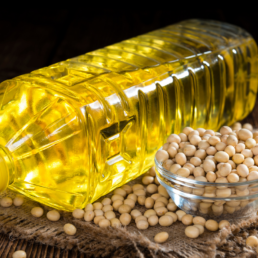
Seedy Friends
There is some evidence to suggest that the consumption of certain seed oils, such as soybean oil and corn oil, may reduce nitric oxide (NO) production by impairing NOS activity.
For example, a study published in the American Journal of Physiology-Heart and Circulatory Physiology found that rats fed a diet high in soybean oil had reduced NOS activity and NO production in their blood vessels compared to rats fed a diet high in coconut oil.
Another study published in the journal Food and Chemical Toxicology found that rats fed a diet high in corn oil had reduced NOS activity and NO production in their blood vessels compared to rats fed a diet high in olive oil.
While these findings suggest that certain seed oils may impair NOS activity and reduce NO production, it’s important to note that these studies were conducted in animals. The relevance to humans is not yet fully understood. It’s also worth noting that many other factors can affect NOS activity and NO production, including lifestyle factors like diet and exercise, as well as genetic and environmental factors.
Brush & Floss
There is also good evidence to suggest that good oral hygiene, including brushing and flossing, may help to support nitric oxide (NO) production by promoting healthy bacteria in the mouth.
Studies have shown that certain types of bacteria in the mouth, such as those that cause gum disease, can produce harmful toxins that can impair NOS activity and reduce NO production. By promoting healthy bacteria in the mouth through good oral hygiene practices, it may be possible to reduce the levels of harmful toxins and support NOS activity and NO production.
For example, a study published in the Journal of Periodontology found that people with periodontitis (a type of gum disease) had lower levels of NO in their saliva compared to people with healthy gums. Another study published in the Journal of Clinical Periodontology found that treating gum disease with scaling and root planing (a type of deep cleaning) led to significant improvements in NOS activity and NO production in the blood vessels.
Nitric Oxide Synthase & Grape Seed Extract
There is some good evidence to suggest that grape seed extract may have a positive effect on nitric oxide synthase (NOS) activity and nitric oxide (NO) production.
Grape seed extract is rich in antioxidants, including flavonoids and proanthocyanidins, which may help to reduce oxidative stress and inflammation, both of which can impair NOS activity and NO production.
A study published in the Journal of Cardiovascular Pharmacology found that treatment with grape seed extract led to significant improvements in NOS activity and NO production in the blood vessels of rats with high blood pressure.
Another study published in the Journal of Agricultural and Food Chemistry found that grape seed extract increased NOS activity and NO production in human umbilical vein endothelial cells, which line the inner surface of blood vessels.
While these findings suggest that grape seed extract may have potential benefits for NOS and NO, it’s worth noting that more research is needed to fully understand the effects of grape seed extract on cardiovascular health and NOS activity in humans.
How Does It Boost NOS?
The exact mechanism by which grape seed extract may boost nitric oxide synthase (NOS) activity and nitric oxide (NO) production is not fully understood. However, several potential mechanisms have been proposed.
One potential mechanism is that grape seed extract contains high levels of antioxidants, including flavonoids and proanthocyanidins, which may help to reduce oxidative stress and inflammation. Oxidative stress and inflammation can impair NOS activity and NO production, so reducing these factors may help to support NOS and NO.
Another potential mechanism is that grape seed extract may help to increase the availability of the amino acid arginine, which is a precursor for nitric oxide synthesis. Arginine is converted to NO by NOS, so increasing the availability of arginine may help to support NOS and NO production.
Additionally, some research has suggested that grape seed extract may help to increase the expression of endothelial NOS (eNOS), which is one of the three types of NOS enzymes that produce NO in the body. By increasing eNOS expression, grape seed extract may help to support NOS and NO production in the endothelial cells that line the inner surface of blood vessels.
While more research is needed to fully understand the mechanisms by which grape seed extract may support NOS and NO production, these potential mechanisms suggest that grape seed extract may benefit cardiovascular health.
Hawthorne Berry
Hawthorn berry has been suggested to potentially support nitric oxide synthase (NOS) activity and nitric oxide (NO) production through a few different mechanisms.
Firstly, hawthorn berry contains high levels of flavonoids, including vitexin and rutin, which have been shown to have antioxidant and anti-inflammatory properties. Oxidative stress and inflammation can impair NOS activity and NO production, so reducing these factors may help to support NOS and NO.
Secondly, hawthorn berry has been suggested to help increase the availability of the amino acid arginine, a precursor for nitric oxide synthesis. Arginine is converted to NO by NOS, so increasing the availability of arginine may help to support NOS and NO production.
Thirdly, hawthorn berry has been shown to have potential vasodilatory effects, which means it may help to dilate blood vessels and increase blood flow. This may help to support NOS and NO production by providing more oxygen and nutrients to the endothelial cells that produce NO.
Finally, hawthorn berry has been suggested to have potential benefits for endothelial function, which is closely related to NOS and NO production. Endothelial cells produce NO through the action of NOS, and endothelial dysfunction has been linked to impaired NOS activity and reduced NO production. By supporting endothelial function, hawthorn berries may help to support NOS and NO production.
What Works Better To Boost Nitric Oxide, Arginine, Citrulline or Beets?
Boost Nitric Oxide Today!
Arginine, how it works to boost nitric oxide
Arginine is an amino acid found in many foods that we eat and boosts nitric oxide. When we consume arginine, our body uses it to produce a molecule called nitric oxide. Nitric oxide is important because it helps to relax the blood vessels in our body, which allows more blood to flow through them.
Think of your blood vessels like straws – if they are narrow, it’s harder for the liquid to flow through them. But if the straws are wider, the liquid can flow more easily. Nitric oxide helps to widen the blood vessels, which allows more blood to flow through them.
When we have more blood flowing through our blood vessels, it delivers more oxygen and nutrients to our muscles and organs. This is why athletes use arginine to improve their performance.
Arginine is an amino acid that our body uses to produce nitric oxide. Nitric oxide helps to widen our blood vessels, which allows more blood to flow through them and deliver oxygen and nutrients to our muscles and organs.
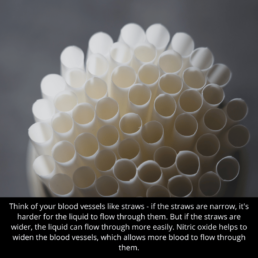
As we age
Your arteries can lose elasticity over time due to a process called arteriosclerosis. This happens when substances such as cholesterol and fat build-up. This occurs in the walls of the veins, forming a plaque. Over time, the plaque can harden and cause the walls of the arteries to become stiff and less flexible.
Arteriosclerosis is a gradual process with various factors, including a poor diet and lack of exercise. Smoking, high blood pressure, and high-stress levels can also cause it. These factors can damage the inner lining of the arteries. This causes inflammation and makes it easier for plaque to build up.
The Arteries
As the arteries become less elastic, it can become more difficult for blood to flow through them. This increases the risk of heart disease, stroke, and other health problems. That’s why it’s essential to maintain the health of your arteries by eating a healthy diet. Exercising regularly and not smoking also play an important role.
Why may arginine not work for some people?
Arginine may not work for some people because our bodies can have different levels of effectiveness in converting arginine to nitric oxide. Also, the optimal dose of arginine varies from person to person. Some individuals may not be taking enough to see a noticeable effect. If you have been taking a cheap, low-dose arginine and noticed no effects, that could be the case for you.
Dosage
The beginning dose for effective arginine supplementation starts at 5000 mg for some.
What do most studies conclude about nitric oxide and arginine?
Most studies conclude that arginine can potentially increase nitric oxide levels in the body. This can improve blood flow, exercise performance, and cardiovascular health. However, the results of studies have been mixed, with some studies showing significant benefits and others showing no effect. Why is this?
What about the studies that show that arginine doesn’t boost nitric oxide?
Mouthwash, antibiotics, and antacids can hurt nitric oxide production in the body.
There are hundreds of published studies on arginine and its effects on human health. Studies include researching potential benefits for cardiovascular health, exercise performance, and erectile dysfunction, among other areas.
The results of these studies are mixed, with some showing a net positive result and others being inconclusive or negative.
Is It Good Science?
Regarding antacid use or mouthwash use in these studies, some take these factors into account, while many others do not. When these factors are not taken into account, it can potentially skew the results of the study. This is because of the absorption of the supplement and the conversion of nitrates to nitric oxide in the body. The use of certain chemicals can negatively influence the effectiveness of arginine.
For example, if people in a study are using antacids, it could reduce the acidity of the stomach and potentially reduce the absorption of arginine in the body. Thus making it more difficult to see the supplement’s effects. Similarly, if people in a study are using mouthwash, it could potentially reduce the production of nitric oxide from the nitrates in their diet. Again making it more difficult to see the effects of the arginine supplement.
Therefore, it is important for researchers to control for these factors and other potential confounding variables in their studies. Participants must be screened for usage to get an accurate picture of the effects of arginine supplementation on health. Many so-called studies showing that arginine is not useful are guilty of not properly controlling the intake of these substances by participants in the study.


Citrulline as a Nitric Oxide Booster
The kidneys convert citrulline into arginine, which the body then uses to produce nitric oxide. While citrulline does not directly convert into nitric oxide like arginine, it can increase arginine levels in the body more effectively than taking arginine supplements. This effectiveness comes from the liver breaking down much of the orally taken arginine before it reaches the bloodstream. In contrast, the liver does not break down citrulline as much, allowing it to raise arginine levels in the body more efficiently.
Time Released
The time frame for citrulline to boost nitric oxide levels in the body may be slightly longer than for arginine. This is because it takes time for the kidneys to convert citrulline into arginine. The effects of citrulline may last longer than arginine due to its slower absorption and longer half-life in the body.
Some studies have suggested that citrulline may be more effective than arginine at improving exercise performance, while others have suggested that arginine may be more effective for certain cardiovascular conditions.
Many studies have suggested that taking both supplements together may be more effective at increasing nitric oxide levels in the body.
One study that has shown promise for citrulline and human health is a 2017 study published in the Journal of the International Society of Sports Nutrition. The study found that citrulline supplementation was effective at improving exercise performance and reducing muscle soreness, with no reported adverse effects.
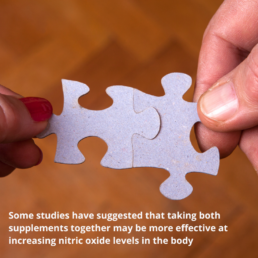
Boost Nitric Oxide With Beetroot
Beetroot contains high levels of inorganic nitrate, which is converted in the body into nitric oxide. NO is a signaling molecule that helps to regulate blood flow, blood pressure, and vascular function. Nitric oxide works by relaxing the smooth muscle cells in the walls of blood vessels. Thus allowing them to dilate and improve blood flow. This, in turn, can help to reduce blood pressure, improve oxygen delivery to tissues, and support cardiovascular health.
Several studies have investigated the effects of beetroot supplementation on cardiovascular health. For example, a study of 22 randomized controlled trials found that beetroot juice consumption was associated with significantly reducing blood pressure. This was in healthy individuals and those with hypertension (Siervo et al., 2018). Another study found that beetroot juice improved endothelial function in patients with heart failure (Gheibi et al., 2019).
Beetroot For Exercise
In addition to its cardiovascular benefits, beetroot supplementation may also improve exercise performance. Several studies have reported that beetroot supplementation can increase time to exhaustion. They also show improved running and cycling performance in trained and untrained individuals (Jones et al., 2018). One mechanism for this effect may be the ability of nitric oxide to improve blood flow to the muscles. This then increases oxygen and nutrient delivery to the body.
Bodybuilders may also benefit from beetroot supplementation due to its potential to enhance muscle growth and recovery. A study by Cermak et al. (2012) found that beetroot juice supplementation increased muscle protein synthesis in healthy men following exercise.
Timeframe For Boosting Nitric Oxide
The effects of beetroot on nitric oxide production and cardiovascular function may last for several hours following consumption. The exact duration of the effect may vary depending on the individual and the dose. In contrast, the effects of arginine and citrulline on nitric oxide production may be more prolonged. This is because they are involved in synthesizing nitric oxide within the body.
Beetroot supplementation appears to be generally safe, with few reported adverse effects.
There is indeed much evidence to suggest that combining beetroot with arginine or citrulline is beneficial. The combo may enhance the effects on nitric oxide production and cardiovascular function. A study by Lidder et al. (2019) found that combining beetroot juice and citrulline supplementation improved blood flow and reduced blood pressure in healthy adults compared to either supplement alone.
